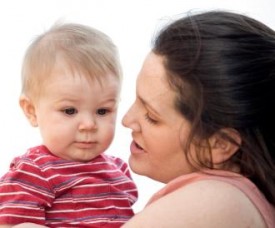
So here you are! In front of you is a newborn, a tiny miracle; a little person that you and your loved one created. This little person looks a little like your aunt Ruth, your father, and you. You have never experienced anything like the love and affection you feel for this little person and you want to guide his or her life the best you can.
What do you do? Does it matter how you hold it, feed it, talk it, attend to it? The short answer is ‘yes’. But the longer answer is that what the infant brain needs in terms of stimulation from parents is relatively simple and very natural. The baby’s brain is a “learning machine” set from day one to absorb and adapt to the world around it.
The parent’s job is a reasonably simple one—to provide an environment that fosters development of skills that will be helpful in later life. If it were an overwhelming task, humans would have died out as a species eons ago. But babies in a host of variable cultures, and subject to many different child rearing practices, in the main, grow up remarkably similar—they walk, talk, play, and eventually become productive adults. However, there is some new research that can guide parents on their journey.
Current research [i]has demonstrated that the primary job of the infant brain is to detect relevant information about language and the environment in which the baby is born and to design itself, in a relatively short period of time, to be an expert at that language and environment. If a baby is exposed to the English language, for example, the brain quickly begins the task of sorting that language into its smallest meaningful elements—the speech sounds—that signal differences in meaning from one word or another. [ii]
In a similar way, a newborn begins to explore his or her environment by observing how objects change in size and position when he or she is lying in a crib and later by observing how objects change when the child can move toward them and manipulate them. In just four months, the research shows, the infant can begin to pick out relevant visual cues that will help to recognize familiar faces, understand space, distinguish two versus three dimensional objects, and perceive a whole object even when only part of the object is observable, such as when a ball is partially hidden behind a block. [iii]
Through experience, the infant brain matures to become a specialist for the world the child is born into. [iv]A French child becomes a specialist in French, the Russian child a specialist in Russian. In this way, the infant brain “maps” itself to the world around it, with groups of brain cells (neurons) in a particular community like the auditory part of the brain, becoming specialists for processing specific types of information. In this way the brain builds itself to become a remarkable machine, eventually capable of understanding new and complex sentences and paragraphs, learning new vocabulary, solving complex new problems that have never been encountered before and realizing the world is full of individuals who have different, yet valid views and opinions. [v]
Since the experiences of the infant form the starting point for the development of the eventual brain architecture, it is important that those of us who are entrusted with this early experience, parents, caretakers, and day care centers, understand the role we play in the building of the brain’s architecture. It is also essential that researchers help those of us who guide an infant’s early experiences to understand which types of stimulation are “beneficial” to brain development and which could be “detrimental” [vi]as I will discuss in next month’s blog post.
What have you noticed about how babies master their environment? Share your observations on our Scientific Learning Facebookpage!

